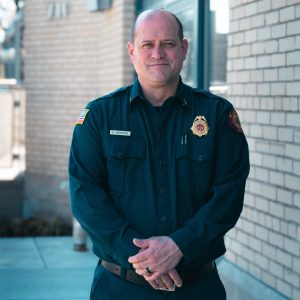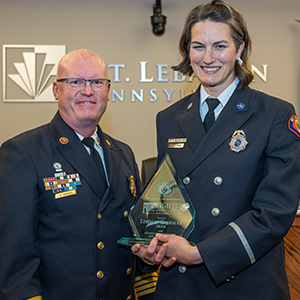sharing expertise overseas

You were in a car crash. When you come to, you see your leg is broken, you have multiple wounds and your body is slipping into shock. You call 911. You feel relief as the ambulance pulls up, thinking everything will be OK in a couple of minutes when you reach the hospital. But once you are loaded into the back of the ambulance, it stays parked on the side of the road. The paramedics are making calls to nearby emergency rooms to find one that has a bed available with a doctor qualified to treat your condition. Two hours go by before they find an ER that will take you. The ambulance finally moves off the side of the road, but the hospital is an hour away, and you are beyond the point where you know or care what is going on around you.
This scenario is rare but not unheard of in Japan, where hospitals may only have a handful of beds in their emergency rooms, physicians don’t often choose to staff the ERs and all emergency medical services are run through local fire departments.
It is one of the flaws in the current state of Japanese EMS that concerns paramedic Chisho Ninomiya of MRTSA, which provides EMS services to Mt. Lebanon and five other South HIlls communities. For more than three years, Ninomiya has been working with Japanese medical professionals to help improve their EMS by providing insight on our system here in the South Hills.
“EMS in the United States really started in the 1960s,” says Ninomiya, who most recently presented on American EMS at a regional conference in Kobe, Japan, last March. “But in Japan, it only started 10 or 15 years ago. It’s still at a very early stage over there. So [at this conference] they wanted me to present to the paramedics to explain what we do in America today—how we have grown since the 1960s and what we are looking into for the future.”
Ninomiya has strong ties to Japanese healthcare. He was born in New Jersey to Japanese parents, and his father was a medical research doctor. His father’s job took the family back to Japan when Ninomiya was 10, and he stayed there through high school graduation. He came back to the United States for college at Carnegie Mellon University and the University of Pittsburgh, which is where he took his first EMT class.

Ninomiya started working as a full-time paramedic for MRTSA in 2009 after volunteering and training with the organization. Meanwhile, his father, who was working as a professor in Japan, put Ninomiya in contact with some friends in the emergency department at Okayama Hospital. They invited Ninomiya to participate in a panel discussion at a national EMS conference held in Okayama in 2013.
At the time, Japanese paramedics were hoping to open their scope of practice—before this, they could only treat some basic symptoms related to cardiac arrest, but they wanted to expand into administering IVs, checking blood sugars and giving glucose, and performing breathing treatments. They invited Ninomiya to speak because they wanted to know how paramedics are trained to perform those tasks in the United States.
“In Japan, a paramedic is basically what we call an EMT,” says Ninomiya, “Here in America, EMT is the beginner level. They do a lot of basic first aid, splinting and bandaging. Then, in Pennsylvania, we have Advanced EMTs and paramedics. Both levels can perform advanced life support. In Japan, the paramedics can’t do much more than intubate, start an IV and administer one or two drugs.”
Ninomiya’s most recent trip to Japan lasted three weeks. He spent time with family, conducted some smaller EMS lectures, went on ride-alongs with his paramedic friends and enjoyed the city before his presentation at the regional EMS conference in Kobe.
“On the morning of the conference, there were a bunch of small presentations by med students and what-not. There weren’t a whole lot of people. I was having fun, thinking ‘This is fine. There are only 100 here, maybe 200 tops.’ Then the afternoon came and it was my turn, and the room was packed with paramedics,” says Ninomiya. “I was told there were around 200 paramedics, 100 emergency physicians and 100 nurses at my presentation.”
His one-hour talk focused on American EMS history, current scope of practice and equipment. Ninomiya recalls that the majority of the Q&A was dominated by questions about lawsuits, because malpractice and other medical lawsuits are not very common in Japan.
“Then after each presentation, they kept calling me up to the stage to give my opinion,” he says. “I’m like ‘I’m done now! I just want to sit down.’ But they seemed to really appreciate what I had to say.”





